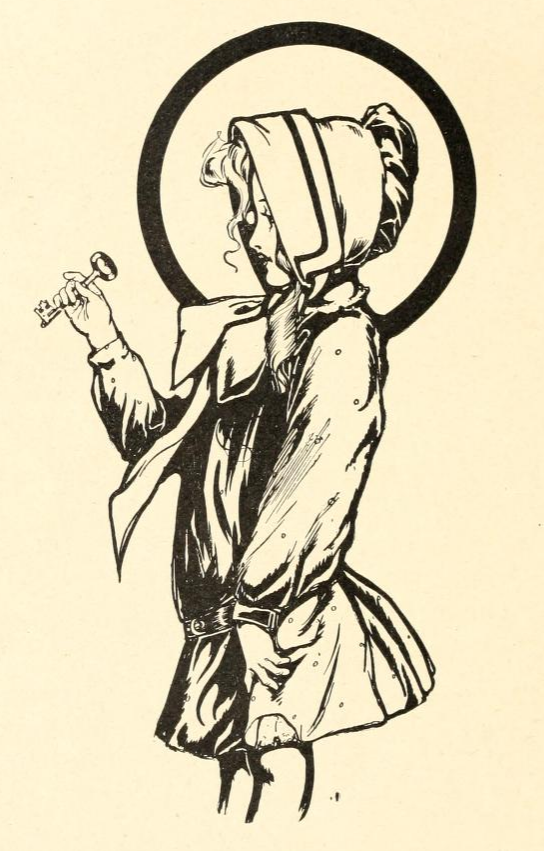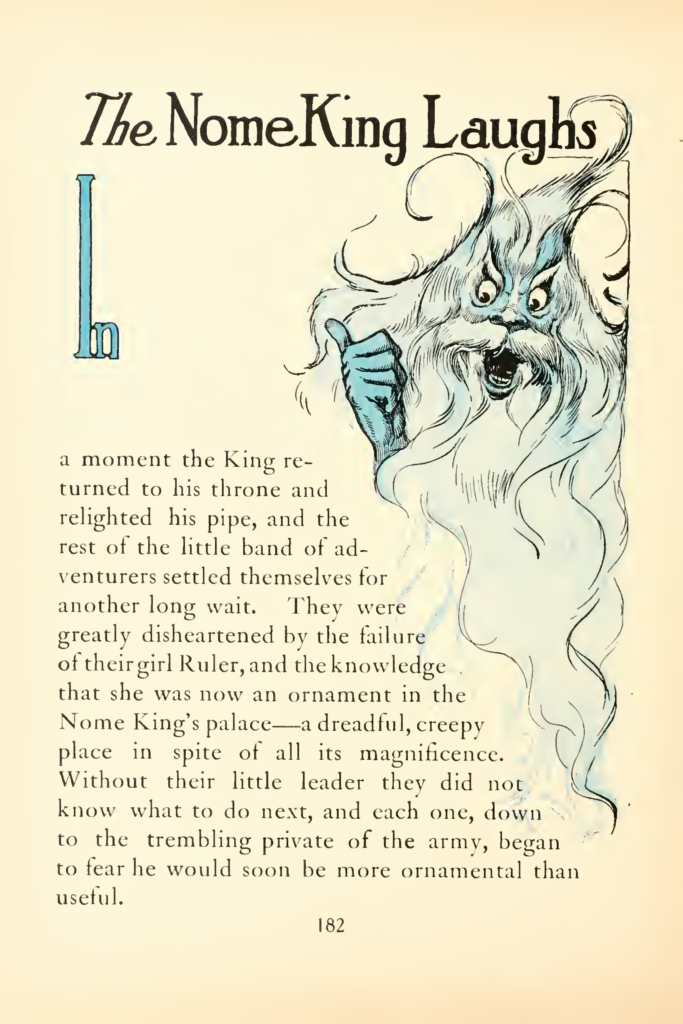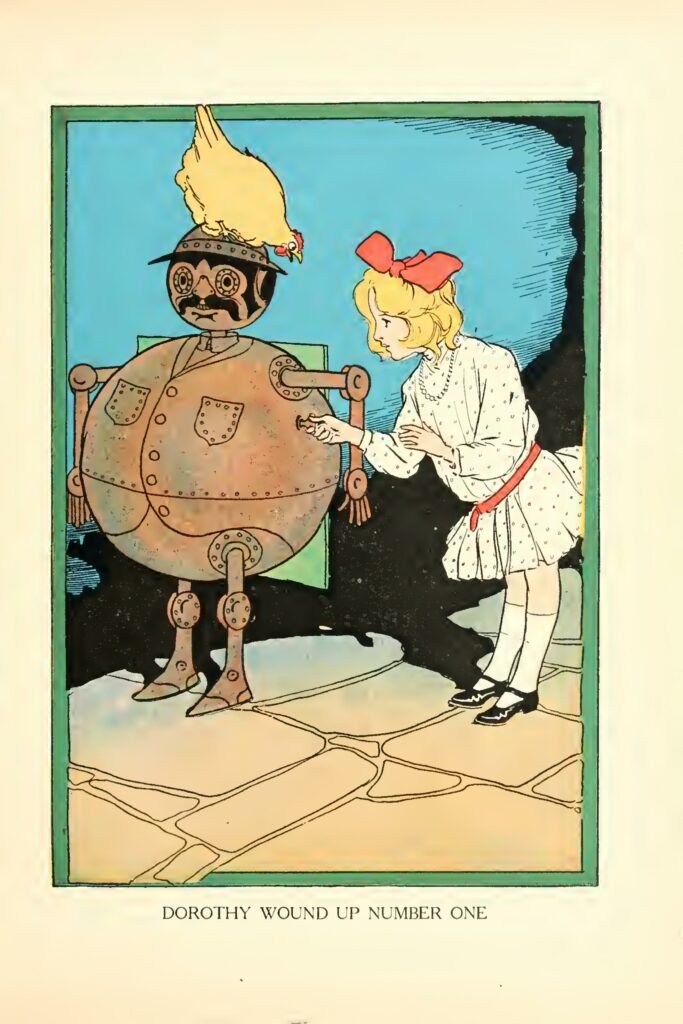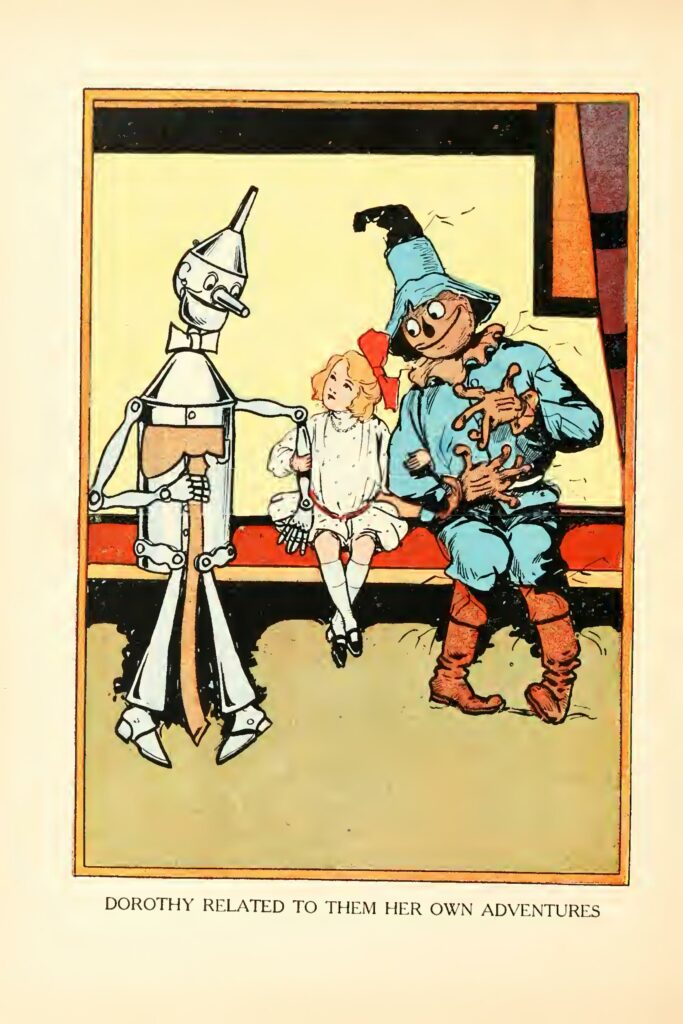
The Wonderful Wizard of Oz drags on for a number of chapters that seem limp and dull after the climactic battle against the Wicked Witch of the West. Ozma of Oz has a brisk pace from start to finish. Also making Ozma of Oz more appealing is much tighter writing, with little of the rambling vaudevillian repartee of The Marvelous Land, and a more focused plot than either previous title. There is a degree of mystery and suspense as Dorothy and Billina figure out where they are and what has happened, even if this takes the form of an exposition dump from Tiktok. When Ozma does appear, she is on a mission closely related to the backstory Dorothy and Billina have already discovered. Then Dorothy, Ozma, and their various friends march directly for the Nome King’s lair and complete their mission. Then, after a happy ending, Dorothy teleports to Australia, and the novel closes—no slogging on after the climax. The earlier novels are also weak on plot. Baum’s main interest is not plot but providing a gallery of strange ideas. These are also present in Ozma of Oz, but in a context of constant forward narrative momentum building to a climax. Baum’s previous style is not bad, but just a different approach. However, modern readers would likely find it duller than the more involved, and more perilous, adventures in Ozma of Oz.
Some of these changes must be attributable to Baum’s skill improving with practice. Some of it also may reflect that Baum wrote The Marvelous Land as the basis for a stage production, whereas he wrote Ozma of Oz just to be a good book. A novel can only benefit if the author values words for their own sake, instead of imagining a play or, nowadays, movie they would prefer to be creating.

John R. Neill’s illustrations are less extensive, no longer appearing on almost every page, but are much more impressive. The book has a colorful inside-cover artwork showing the major characters as spectators and performers in a circus. Chapters open with text bleeding into color illustrations, and the reader is spoiled with forty-one full-page, full-color pieces that bring the world to life, or cartoon life. The linework is solid and the colors often limited, and partially falling outside their outlines, in an alluring way that recalls the look of contemporary newspaper comics.


